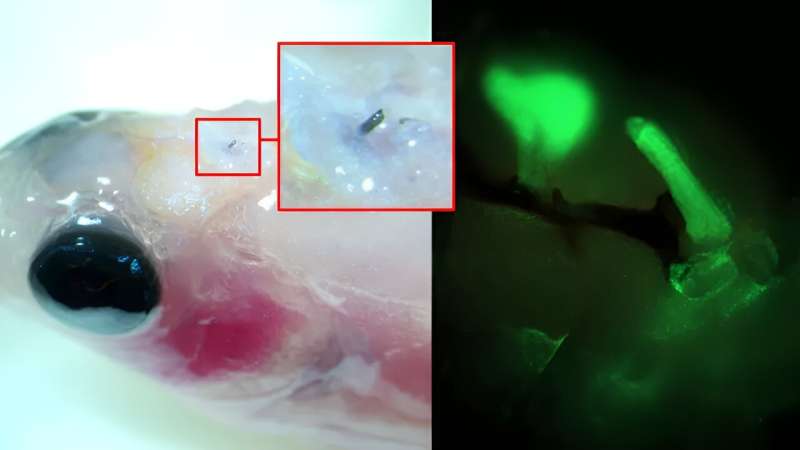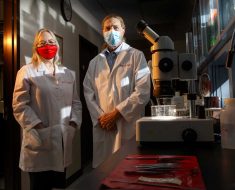
Researchers at Lund University and Gothenburg University have successfully developed temporary, organic electrodes that can be seamlessly integrated into biological systems. The method, now published in Nature Communications, opens up a future where bioelectronics can be implanted in and removed from the body without surgery.
Electrotherapy is a medical treatment method that uses electrical currents to stimulate the body’s tissues and nervous system. Typically, this treatment is used for chronic conditions such as Parkinson’s disease or heart rhythm disorders. However, there are various non-chronic diseases like cancer and nerve injuries that could potentially benefit from electrotherapy. The challenge lies in the need for surgery to place the necessary metal electrodes for the treatment. In sensitive tissues, such as the brain, this often involves a very complex procedure.
“Instead, we have developed a technique where a solution of nanoparticles is injected into the tissue using a needle, the size of human hair. These particles, composed of small molecular chains (polymers), then self-organize into a conducting structure and integrate with the body’s cells,” explains Roger Olsson, professor of chemical biology and drug development at Lund University, who also leads a chemistry laboratory at Gothenburg University.
This approach differs from conventional methods in being minimally invasive. Moreover, the particles break down and are excreted from the body after the treatment, eliminating the need for surgical removal. The electrodes that form cover larger areas than the metal electrodes used today, which can make the treatment more effective.
“Our work naturally integrates electronics with biological systems, which opens up possibilities for therapies for non-chronic diseases, that are difficult to treat. In the study, we used zebrafish, an excellent model for studying organic electrodes in brain structures,” concludes Martin Hjort, a researcher at Lund University and first author of the study.
More information:
Martin Hjort et al, In situ assembly of bioresorbable organic bioelectronics in the brain, Nature Communications (2023). DOI: 10.1038/s41467-023-40175-3
Journal information:
Nature Communications
Source: Read Full Article





